Vultures
There are 23 species of vulture on the planet.
Vultures can be found on almost every continent (America, Africa, Europe and Asia), apart from Australia and Antartica. These birds are vitally important to our planet. We have six species of vultures at Gauntlet Birds of Prey, from the African White-backed Vulture of Sub-Saharan Africa to the Turkey Vulture found in North and South America. Our vultures are the cheekiest of all the birds at the park.
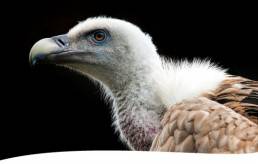
Eurasian Griffon Vulture
The Griffon Vulture holds the record for being the highest flying bird at over 30,000ft.
LATIN NAME: Gyps fulvus
DISTRIBUTION: Southern Europe, Middle East, South-West Asia
HABITAT: Rocky coasts and mountainous regions with open areas
DIET: Carrion
WINGSPAN: 235–270cm
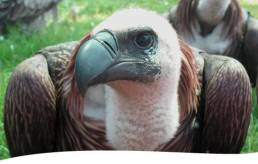
African White-backed Vulture
LATIN NAME: Gyps africanus
DISTRIBUTION: Irregularly throughout Sub-Saharan Africa
HABITAT: Grassy plains, savannah, sparse woodland, thornbush, roosts exclusively in trees
DIET: Carrion
WINGSPAN: 195–230cm
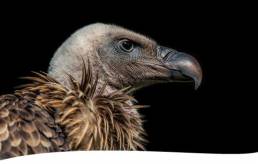
Rüppell’s Vulture
The Rüppell’s Vulture was named after 19th century zoologist Eduard Rüppell.
LATIN NAME: Gyps rueppelli
DISTRIBUTION: Central and Western Africa
HABITAT: Grasslands and dry arid areas
DIET: Carrion
WINGSPAN: 220–260cm
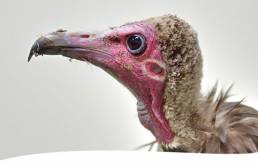
African Hooded Vulture
Hooded Vultures are often referred to as the “People’s friend of Africa” because they do such a good job of cleaning up!
LATIN NAME: Necrosyrtes monachus
DISTRIBUTION: Irregularly through Sub-Saharan Africa
HABITAT: Varied – Grassland, Savannah, also common around towns and villages
DIET: Carrion, insects
WINGSPAN: 150–180cm
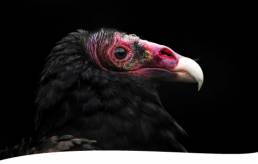
Turkey Vulture
In America Turkey Vultures are often known as ‘Turkey Buzzards’ or ‘John Crow’.
LATIN NAME: Cathartes aura
DISTRIBUTION: Found across much of North and South American continents
HABITAT: Wide range of light wooded to open country, grassland, coastal and desert
DIET: Carrion
WINGSPAN: 160–180cm
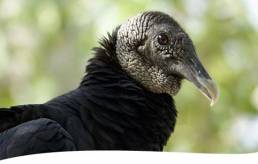
American Black Vulture
Black Vultures communicate using body language, hissing and grunting.
LATIN NAME: Coragyps atratus
DISTRIBUTION: Found across much of North and South American continents
HABITAT: Open or lightly wooded county, also very common around human activity
DIET: Very varied, carrion, also small live prey, fruit and vegetables
WINGSPAN: 130–160cm

